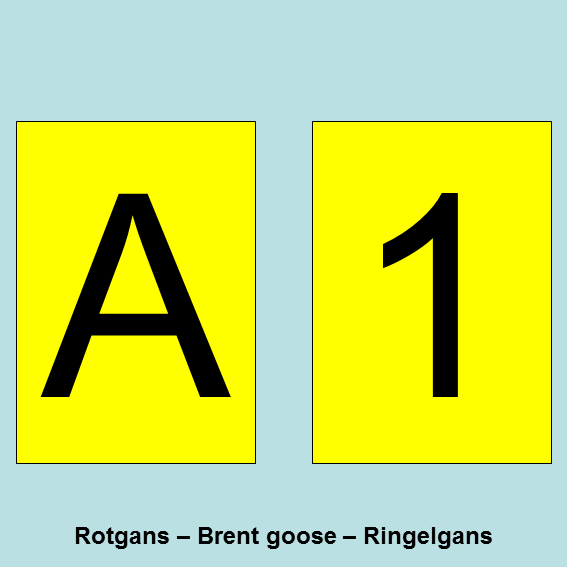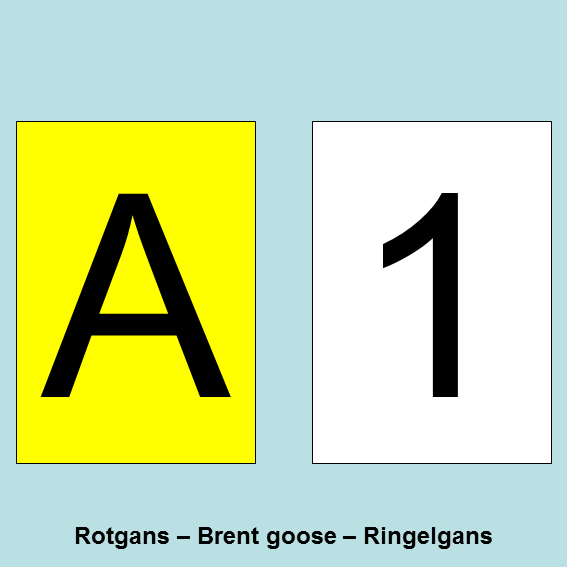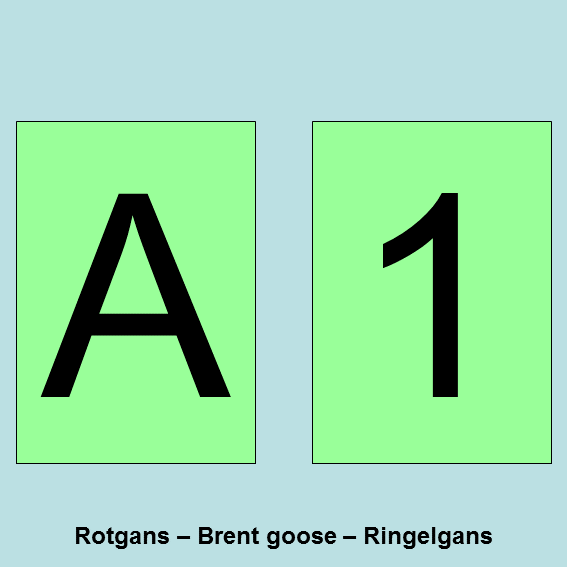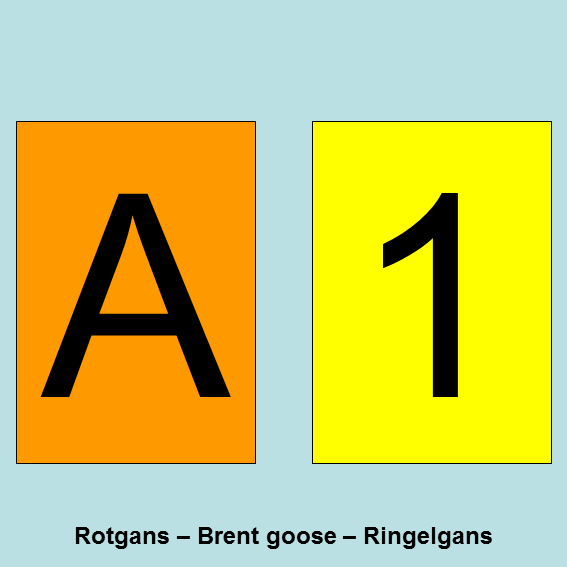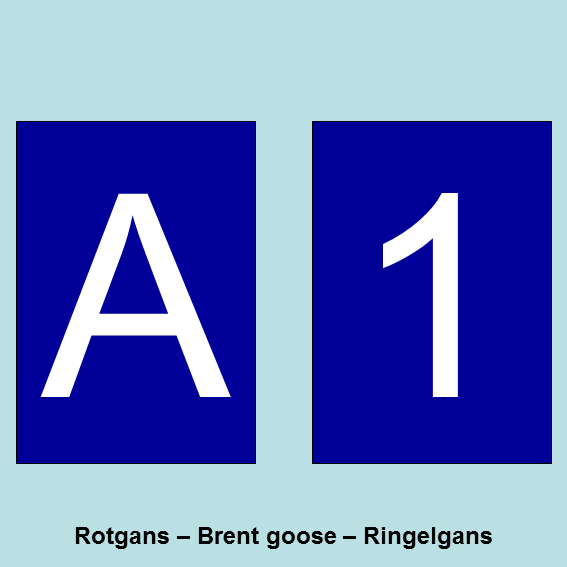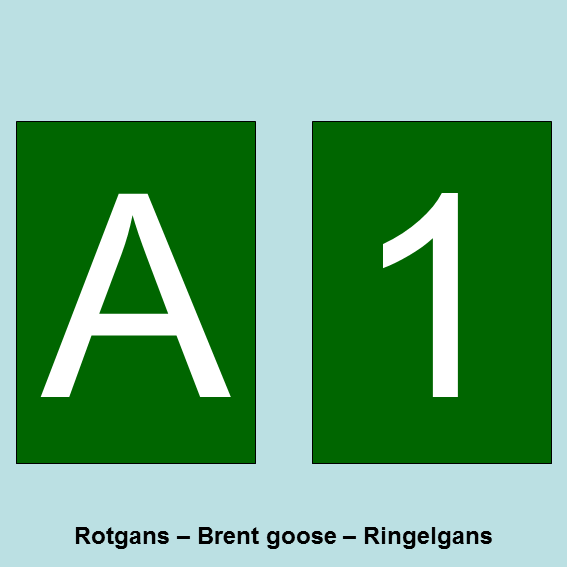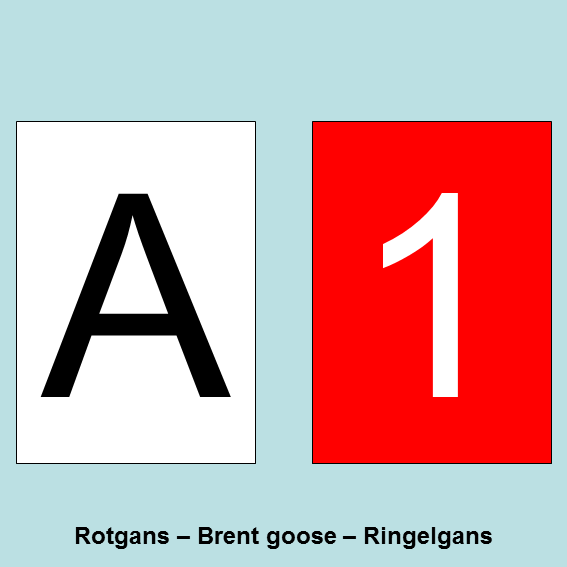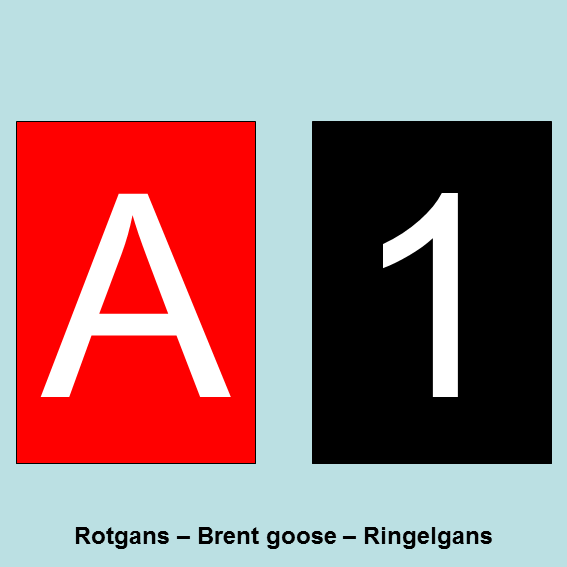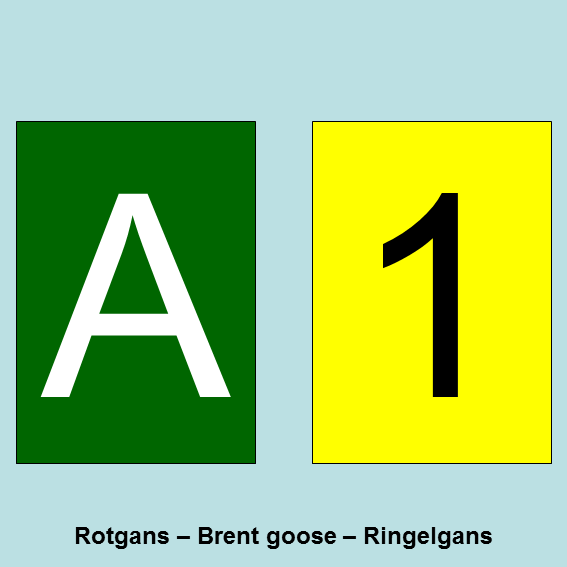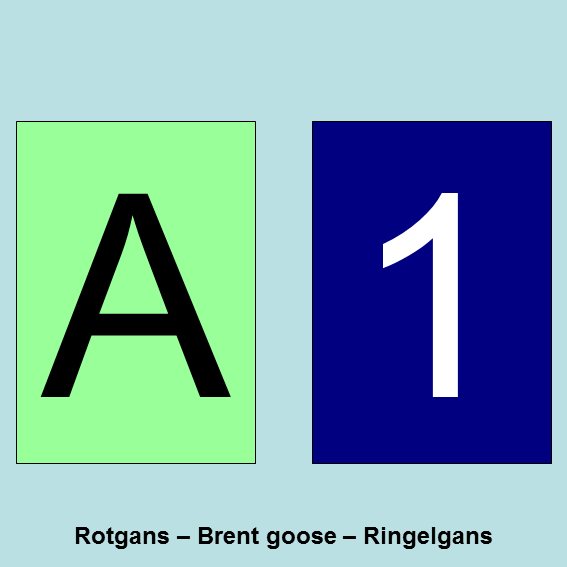Dark-bellied Brent Geese have been marked in summer in Siberia as well as in winter and spring in the Netherlands, the United Kingdom, Germany and France. The marking programme on Dark-bellied brent geese is coordinated by Alterra. Light-bellied Brent Geese from the East Atlantic population are marked on their wintering grounds in NE-England and Denmark. The two subspecies are here treated together for convenience. There is no overlap in colourcombinations. For a separate colour-ringing programme for the Canadian/Irish Light-bellied Brent Geese contact Kendrew Colhoun irishbrentgoose@gmail.com, and for the Danish/English Light-bellied Brent Geese contact Preben Clausen pc@bios.au.dk.
Birds are usually marked with two engraved coloured legrings, one on either leg. The engraved letter/digit is repeated three times around the ring for easy identification. Some birds have been marked with one metal ring on one leg and an engraved two-digit colour-ring on the other. Each bird carries a unique combination. The colours used are: light-blue (B) or light-green (lime)(L), white (W), yellow (Y), orange (O), red (R), dark-blue (B), black (N) or dark-green (G). To maximize contrast with the background colour either white or black inscriptions have been used. Thus light-blue, lime, white, yellow and orange rings always have inscriptions in black, and red, dark-blue, black and dark-green rings always have inscriptions in white. Because dark-blue and black rings are difficult to tell apart, combinations used in dark-blue have never been repeated in black. White lettering often turns a little brownish or yellowish over time. Apart from letters and digits also one, two or three horizontal bars have been engraved around a ring as a unique symbol (indicated by -, = or Z). In Light-bellied Brent Geese also plain colourrings have been used in addition to engraved colour-rings. Also two-digit rings have been used on one leg in combination with a metal ring on the other leg.
The following combinations have been used:
 |
|
Brent Goose OYR9 |
Notation of ring combinations
In the code identifying a bird we use a four-symbol-code. The first one indicates the colour of the left ring, the second one the inscription engraved on the left ring, the third symbol indicates the colour of the right ring and finally the fourth indicates the inscription on that right ring. Some examples:
- ‘W8YH’ means a white ring with 888 on it on the left leg, and a yellow one with HHH on it, on the right leg;
- ‘R Y5’ is a bird carrying a red ring without inscription (note the space on the second position!) on the left leg and a yellow ring with 555 on it on the right;
- ‘OJ*’ means an orange ring with JJJ on it on the left leg and a small metal ring on the right.
- Some birds have been marked with a colour-ring bearing a double inscription, e.g. ‘F2’ of ‘AY’: on one ring and a metal ring on the other leg. These are, in case yellow rings have been used, indicated by ‘YF 2’ (note the space on the third position!) and ‘YA Y’ respectively;
- YZY= : means a bird with a yellow ring with three horizontal bars (triple bar) on the left leg, and a yellow ring with two horizontal bars (double bar) on its right leg
- WAY- : left a white ring with a black A, and right a yellow ring with one black horizontal bar (single bar)
- YV 5: (with a blank on the third position) indicates a single yellow ring with V5 on it, and a metal ring on the other leg. With these double digit rings the presence of a metal ring is not shown in the code, the first position indicates the colour of the ring and the inscription is given on the second and fourth position.
- We have always used one ring on each leg, but a few birds have lost one ring, so please check very carefully for an inconspicuous metal ring on the other leg in case you see a bird with just one colour-ring. When a ring is missing on one leg, this should be reported as two dots, so YF.. is a bird with a yellow ring with F on the left leg, and no ring on its right leg, and ..B5 denotes a bird with no ring on the left leg, and a blue with 5 ring on its right leg.
